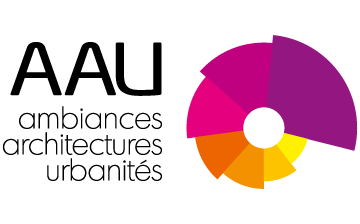Conduite psycho-motrice du passant au sein d’un espace architectural et urbain : l’hypothèse rythmique
Psychomotor conduct of the passer-by within an architectural and urban space: the rhythmic hypothesis
Jean-Baptiste VIALE - Thèse de doctorat soutenue en 2007
Encadrement : J.F. Augoyard
FR
Le langage architectural et urbanistique pose souvent le problème de la perception d’un espace en termes d’agencement et de récurrence de certains éléments qui, par leur disposition spatiale combinée au mouvement de la marche, génèrent un rythme semblant être l’une des composantes de l’organisation perceptive du passant.
Ce phénomène synchronique nécessite un système d’anticipation pour que le passant coordonne le stimulus visuel au mouvement qu’il engage.
Or, la synchronisation, qui se distingue ainsi de la réaction, peut également constituer un système spontané de réponse de la part de l’homme.
Devons-nous, alors, parler d’intention ou d’induction motrice ?
Les processus impliqués dans le traitement psycho-moteur du passant au sein d’un espace architectural ou urbain rythmé seront donc étudiés en observant la qualité et la persistance des groupements rythmiques qu’il perçoit.
Différentes expériences regroupées sous trois aspects (psychologique, affectif et comportemental) nous permettront d’étudier l’effet de l’activité motrice sur la perception visuelle rythmique de l’espace parcouru.
Nous chercherons ainsi à montrer que la perception des groupements rythmiques est issue des modalités motrices et visuelles suggérant un traitement supramodal des intervalles temporels où un aller-retour entre l’activité perceptive et la motricité organise les temps brefs et les temps longs en des groupes aux éléments différenciés.
Les différences individuelles du « sens du rythme » s’expliquant à leur tour par le double rôle de la structuration perceptive et de l’intention motrice des activités successives.
De cette perception dynamique issue d’une mise en rapport des intentions de l’individu avec l’espace qu’il pratique, émergera une appréciation temporelle et affective.
La mise en évidence de tels mécanismes articulant perception, motricité et forme urbaine pourrait s’avérer être une approche pertinente pour les métiers de l’aménagement qualitatif des espaces urbains.
EN
The architectural and urbanistic language often sets the problem of the perception of a space in terms of fitting and recurrence of certain elements which, by their space provision combined with the movement of walk, generate a rhythm which seems to be one of the components of the perceptive organization of the passer-by. This synchronic phenomenon requires a system of anticipation so that the passer-by coordinates the visual stimulus with the movement he engages. However, the synchronization, which is distinguished from the reaction, can also constitute a spontaneous system of answer of the man. Do we have to speak of intention or driving induction ?
The processes implied in the psychomotor treatment of the passer-by inside a rhythmic architectural or urban space will be studied by observing quality and persistence of the rhythmic groupings that he perceives. Various experiments gathered under three aspects (psychological, emotional and behavioural) will enable us to study the effect of the motor activity on the rhythmic visual perception of traversed space.
We will try to show that the perception of the rhythmic groupings results from the driving and visual methods suggesting a supramodal treatment of temporal intervals where a go and back between the perceptive activity and motricity organizes the short times and long times in groups with differentiated elements. Individual differences of the “sense of rhythm” being explained by the double role of the perceptive structuration and the driving intention of the successive activities.
From this dynamic perception resulting from a setting in report of the intentions of the individual with the space which he practises, will emerge a temporal and emotional appreciation. The description of such mechanisms articulating perception, motricity and urban form could
